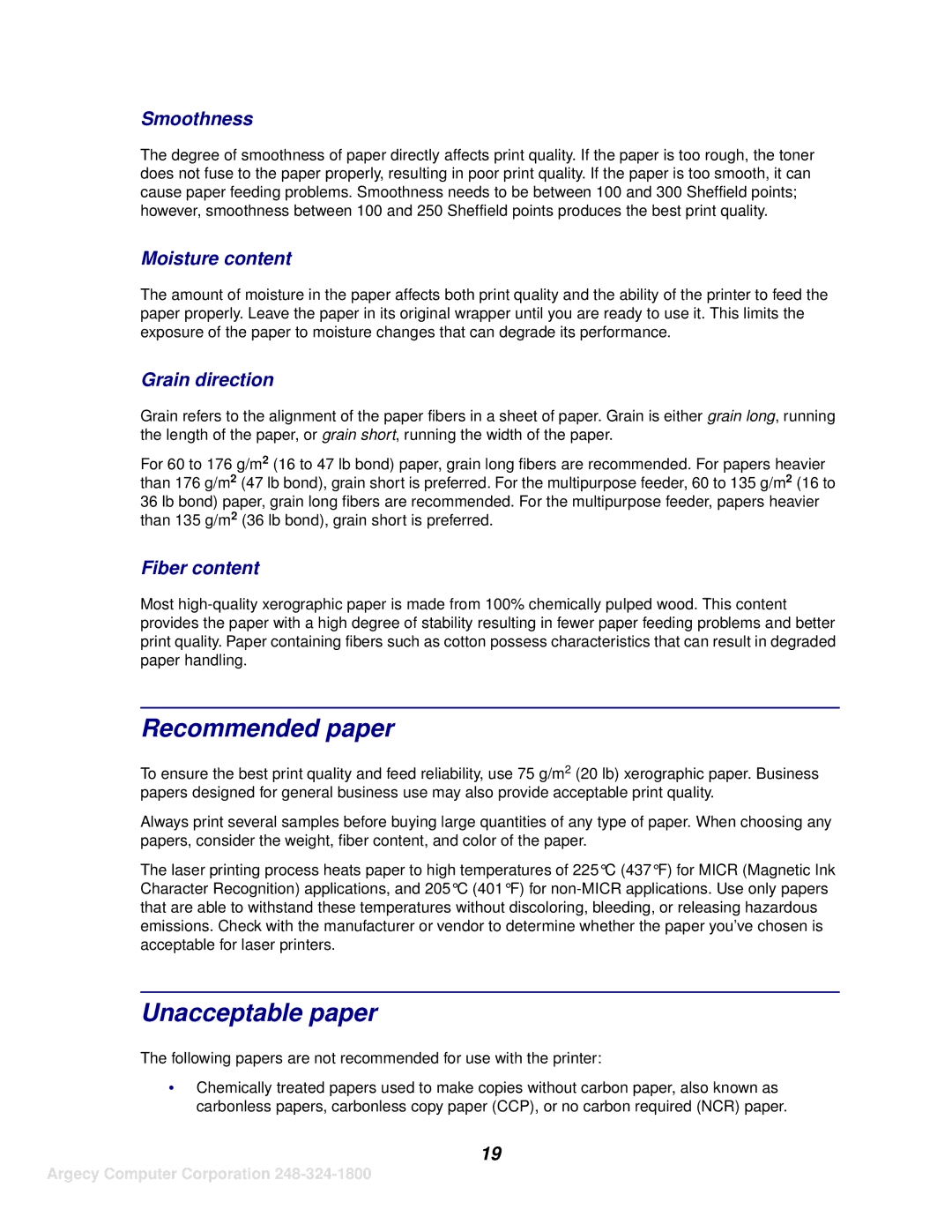
Smoothness
The degree of smoothness of paper directly affects print quality. If the paper is too rough, the toner does not fuse to the paper properly, resulting in poor print quality. If the paper is too smooth, it can cause paper feeding problems. Smoothness needs to be between 100 and 300 Sheffield points; however, smoothness between 100 and 250 Sheffield points produces the best print quality.
Moisture content
The amount of moisture in the paper affects both print quality and the ability of the printer to feed the paper properly. Leave the paper in its original wrapper until you are ready to use it. This limits the exposure of the paper to moisture changes that can degrade its performance.
Grain direction
Grain refers to the alignment of the paper fibers in a sheet of paper. Grain is either grain long, running the length of the paper, or grain short, running the width of the paper.
For 60 to 176 g/m2 (16 to 47 lb bond) paper, grain long fibers are recommended. For papers heavier than 176 g/m2 (47 lb bond), grain short is preferred. For the multipurpose feeder, 60 to 135 g/m2 (16 to 36 lb bond) paper, grain long fibers are recommended. For the multipurpose feeder, papers heavier than 135 g/m2 (36 lb bond), grain short is preferred.
Fiber content
Most
Recommended paper
To ensure the best print quality and feed reliability, use 75 g/m2 (20 lb) xerographic paper. Business papers designed for general business use may also provide acceptable print quality.
Always print several samples before buying large quantities of any type of paper. When choosing any papers, consider the weight, fiber content, and color of the paper.
The laser printing process heats paper to high temperatures of 225°C (437°F) for MICR (Magnetic Ink Character Recognition) applications, and 205°C (401°F) for
Unacceptable paper
The following papers are not recommended for use with the printer:
•Chemically treated papers used to make copies without carbon paper, also known as carbonless papers, carbonless copy paper (CCP), or no carbon required (NCR) paper.
19
